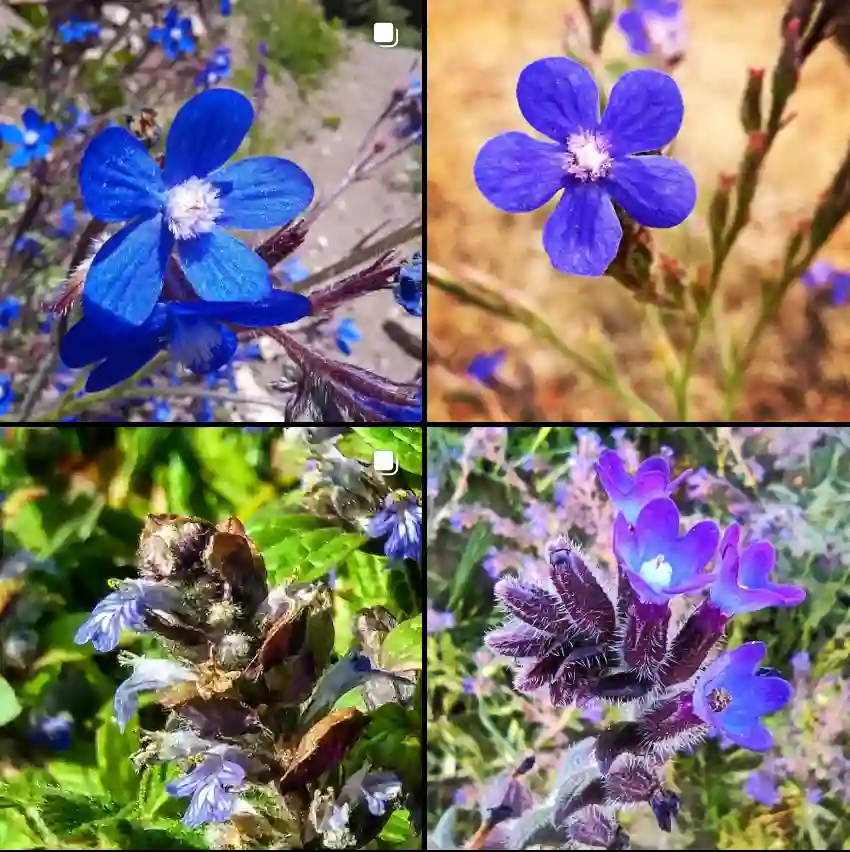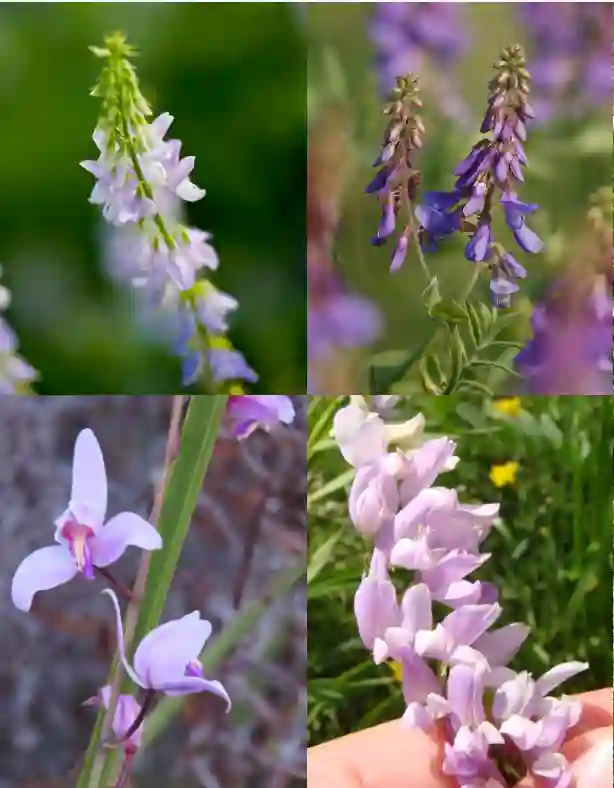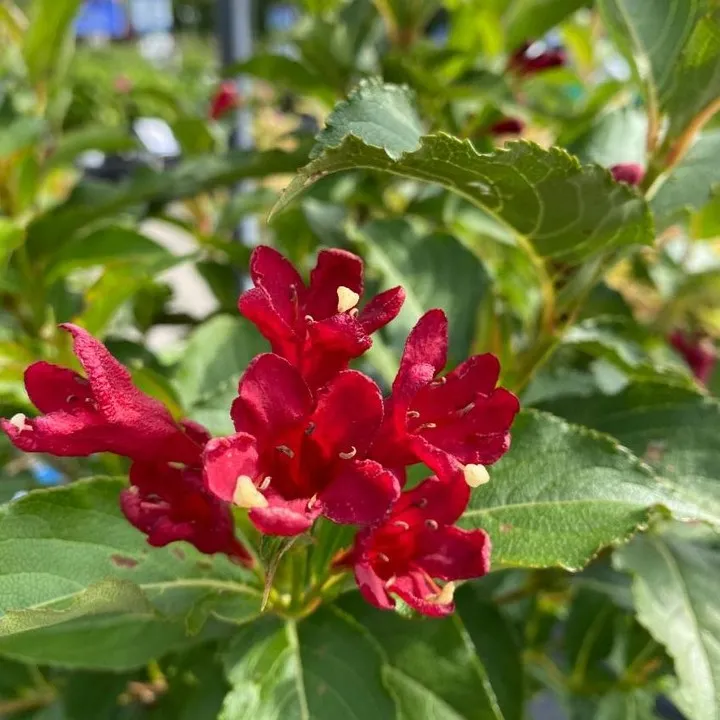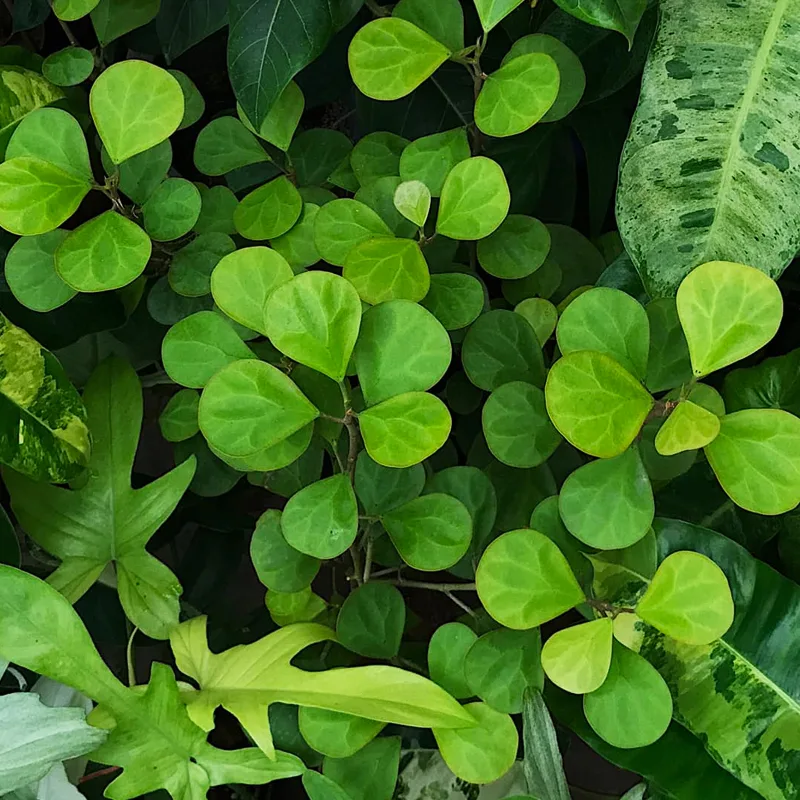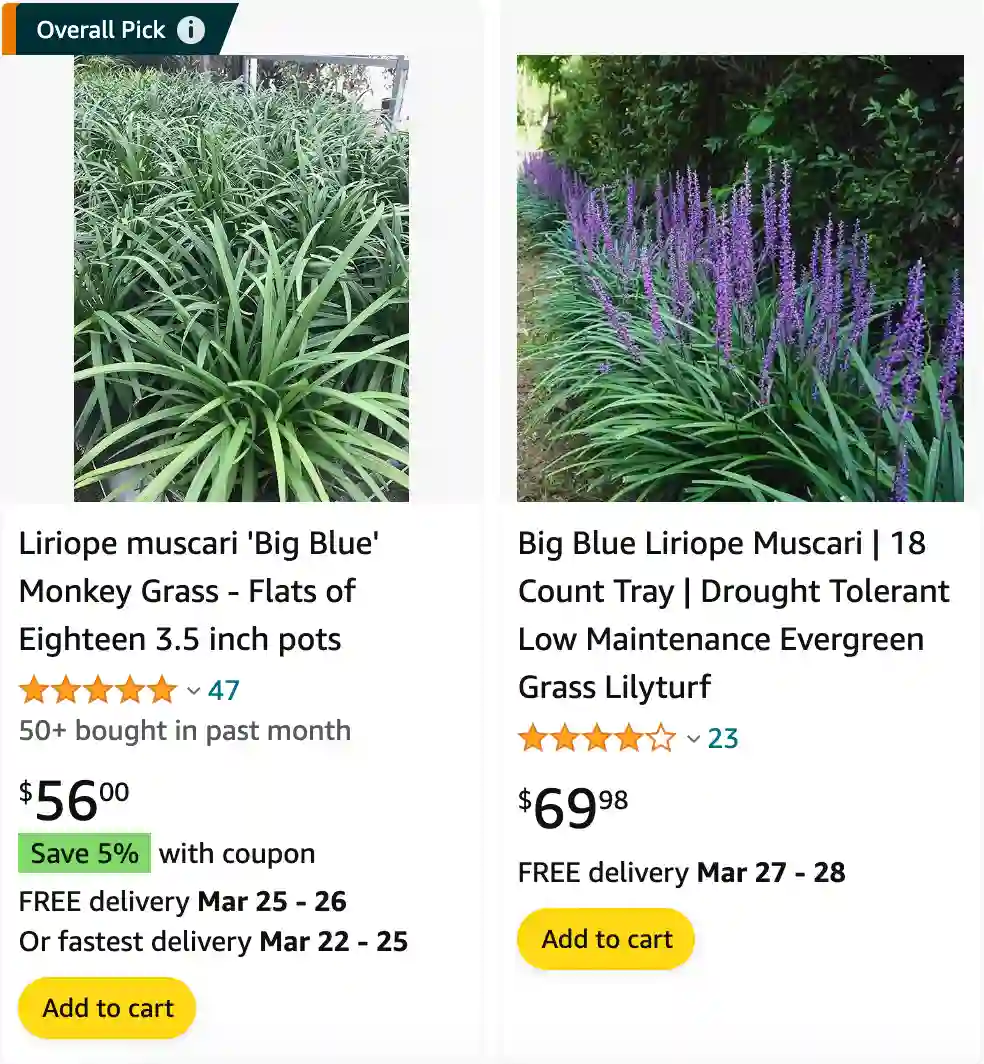
Giant Liriope vs Big Blue
I’ve found the Giant Liriope to be impressive with its robust size and striking presence in the garden, but the Big Blue Liriope, despite its smaller stature, has a more delicate charm that I appreciate for bordering pathways and smaller garden spaces.
Variegated Liriope vs Big Blue Liriope
The Variegated Liriope adds a vibrant splash of color with its creamy-white edges contrasting against its deep green leaves, creating a visually appealing texture that stands out more than the uniform Big Blue Liriope.
8 Species in Genus Liriope
Liriope Super Blue vs Big Blue
While both are resilient and easy to care for, I lean towards the Liriope Super Blue for its intense blue-purple flowers that bloom longer into the season, adding a burst of color that makes my garden feel lively throughout the summer.
Does big blue liriope spread?
Big blue liriope can spread, but it’s not overly aggressive like some other plants. In my experience, it forms clumps that slowly expand over time, filling in spaces nicely without becoming invasive. I’ve found it to be a manageable and attractive ground cover option in my garden.
Can big blue liriope take full sun?
Regarding its tolerance to sunlight, big blue liriope can indeed take full sun, but it also thrives in partial shade. I’ve grown it in both conditions and noticed it does well as long as it receives adequate water, especially during hot summer months.
How far apart to plant big blue liriope?
When planting big blue liriope, I usually space them about 12 to 18 inches apart. This allows them enough room to grow and fill in without overcrowding each other. It’s important to give them space to spread and showcase their full beauty.
How fast does big blue liriope grow?
As for its growth rate, big blue liriope isn’t the fastest-growing plant, but it’s steady. From my experience, it typically takes a couple of seasons to establish and really start spreading. However, once it’s settled, it fills in nicely and requires minimal maintenance.
How to plant Liriope Big Blue?
To plant big blue liriope, start by selecting a location that receives either full sun or partial shade, depending on your preference and the conditions of your garden. Prepare the soil by loosening it with a garden fork or shovel to a depth of about 6 inches. If the soil is heavy or compacted, mix in some compost or organic matter to improve drainage and fertility.
Next, dig a hole that is slightly wider and no deeper than the root ball of the liriope plant you’re planting. Gently remove the plant from its container and loosen the roots if they’re tightly bound. Place the plant in the center of the hole, ensuring that the top of the root ball is level with the surrounding soil.
Fill in the hole with soil, firming it gently around the roots to remove any air pockets. Water the newly planted liriope thoroughly to help settle the soil and encourage root establishment. Mulch around the base of the plant with a layer of organic mulch, such as shredded bark or compost, to help retain moisture and suppress weeds.
Water the liriope regularly, especially during the first growing season, to keep the soil consistently moist but not waterlogged. Once established, big blue liriope is relatively drought-tolerant and low-maintenance. Enjoy watching it grow and fill in your garden with its attractive foliage!
Is big blue liriope a perennial?
Yes, big blue liriope is a perennial. It comes back year after year, adding reliable color and texture to the garden. I appreciate its consistency and the fact that I don’t have to replant it annually.
Is big blue liriope deer resistant?
In my experience, big blue liriope is deer resistant. I’ve noticed that deer tend to avoid it in my garden, which is a relief since deer can be quite destructive to other plants.
Is big blue liriope evergreen?
Big blue liriope is evergreen, meaning it retains its foliage year-round. This characteristic adds to its appeal, providing greenery and interest in the garden even during the winter months.
Is big blue liriope toxic to dogs?
As far as I know, big blue liriope isn’t toxic to dogs. I’ve had it in my garden for years, and my furry friends have never shown any interest in nibbling on it. However, it’s always a good idea to monitor pets around plants and consult a veterinarian if there are any concerns.
When does big blue liriope bloom?
Big blue liriope typically blooms in late summer to early fall. The small purple or white flowers add a charming touch to the landscape, though I mainly appreciate this plant for its foliage rather than its blooms.
When to plant big blue liriope?
I usually plant big blue liriope in the spring or fall when temperatures are moderate. This gives the plant time to establish its roots before facing the extremes of summer heat or winter cold. I’ve found that planting during these seasons helps ensure success and a healthy start for the liriope.
If i die, water my plants!
